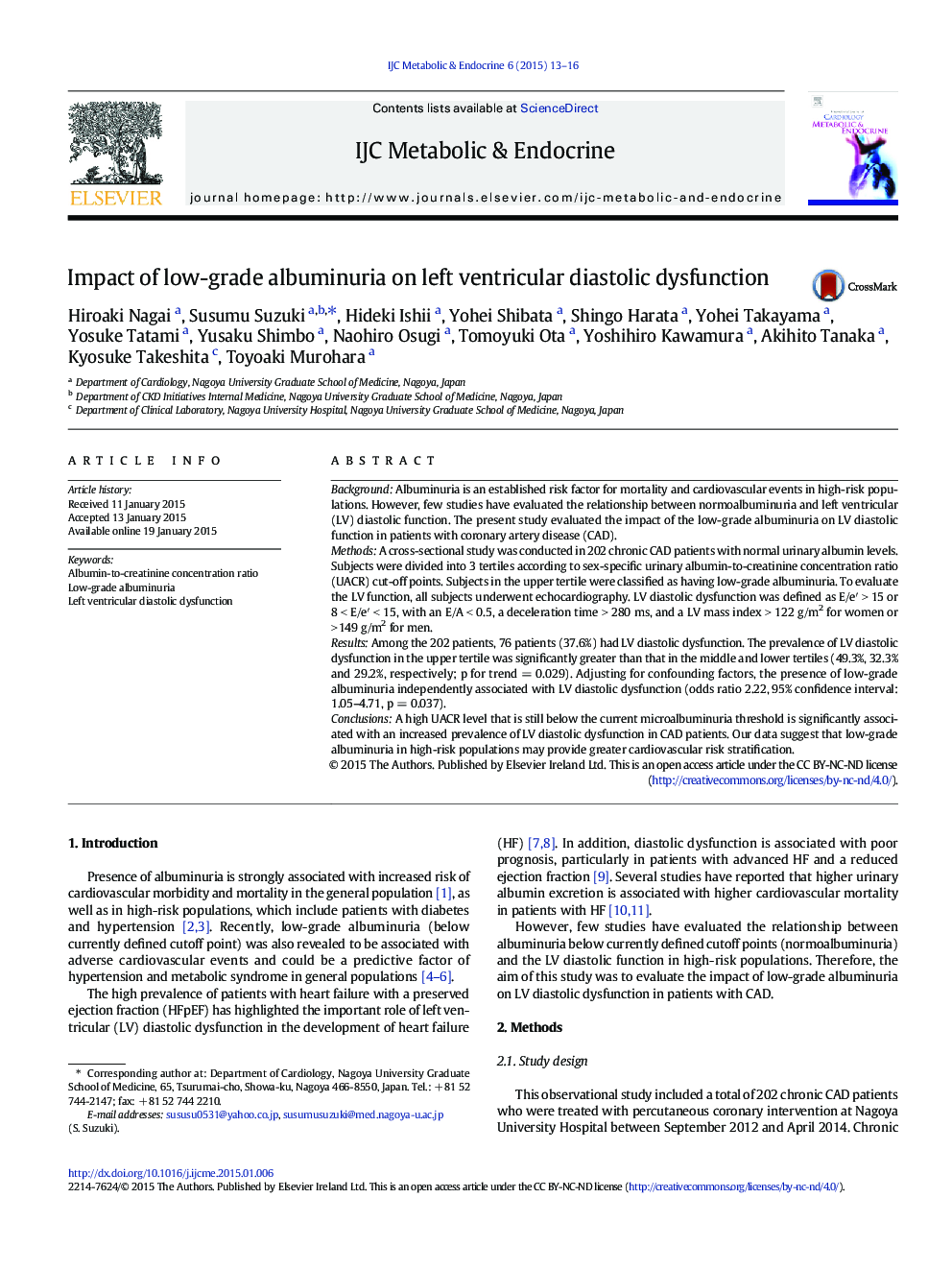| Article ID | Journal | Published Year | Pages | File Type |
|---|---|---|---|---|
| 2927205 | IJC Metabolic & Endocrine | 2015 | 4 Pages |
BackgroundAlbuminuria is an established risk factor for mortality and cardiovascular events in high-risk populations. However, few studies have evaluated the relationship between normoalbuminuria and left ventricular (LV) diastolic function. The present study evaluated the impact of the low-grade albuminuria on LV diastolic function in patients with coronary artery disease (CAD).MethodsA cross-sectional study was conducted in 202 chronic CAD patients with normal urinary albumin levels. Subjects were divided into 3 tertiles according to sex-specific urinary albumin-to-creatinine concentration ratio (UACR) cut-off points. Subjects in the upper tertile were classified as having low-grade albuminuria. To evaluate the LV function, all subjects underwent echocardiography. LV diastolic dysfunction was defined as E/e′ > 15 or 8 < E/e′ < 15, with an E/A < 0.5, a deceleration time > 280 ms, and a LV mass index > 122 g/m2 for women or > 149 g/m2 for men.ResultsAmong the 202 patients, 76 patients (37.6%) had LV diastolic dysfunction. The prevalence of LV diastolic dysfunction in the upper tertile was significantly greater than that in the middle and lower tertiles (49.3%, 32.3% and 29.2%, respectively; p for trend = 0.029). Adjusting for confounding factors, the presence of low-grade albuminuria independently associated with LV diastolic dysfunction (odds ratio 2.22, 95% confidence interval: 1.05–4.71, p = 0.037).ConclusionsA high UACR level that is still below the current microalbuminuria threshold is significantly associated with an increased prevalence of LV diastolic dysfunction in CAD patients. Our data suggest that low-grade albuminuria in high-risk populations may provide greater cardiovascular risk stratification.
